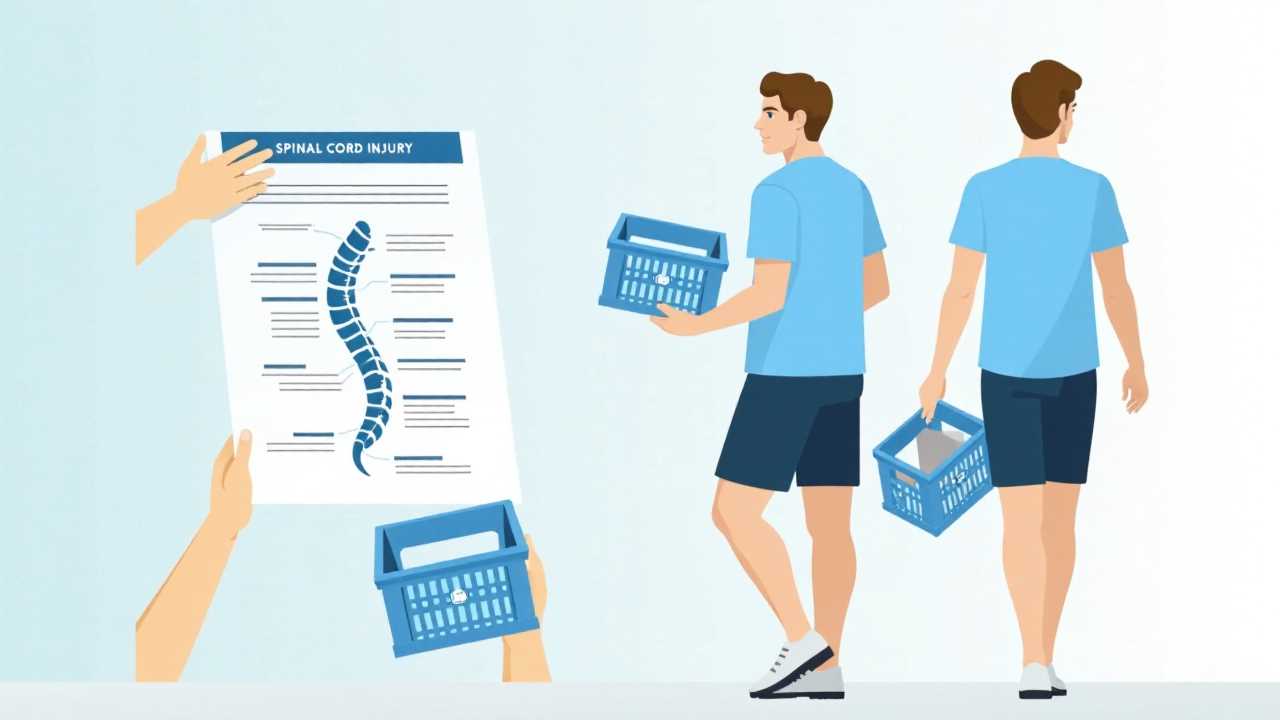
Understanding Spinal Cord Injury Rehabilitation
Spinal cord injuries (SCI) can significantly impact an individual's life, affecting mobility, sensation, and overall quality of life. Rehabilitation is a critical component in the recovery process, focusing on restoring function and independence. Spinal cord injury rehabilitation involves a comprehensive approach that includes physical therapy, occupational therapy, and psychological support. The goal is to help individuals regain as much mobility and independence as possible through personalized recovery plans tailored to their specific needs.
The Importance of Personalized Recovery
Every spinal cord injury is unique, and so is the recovery journey. A personalized recovery plan is essential for addressing the specific challenges faced by each individual. This approach considers the type and severity of the injury, the patient's physical condition, and their personal goals. By tailoring the rehabilitation process, therapists can focus on the most effective strategies for mobility improvement and functional training.
Tailored Exercises for Optimal Recovery
Tailored exercises play a vital role in spinal cord injury rehabilitation. These exercises are designed to target specific muscle groups and improve overall strength, flexibility, and coordination. A physical therapist will assess the patient's abilities and limitations to create a customized exercise program. This may include:
- Strength training: Focusing on building muscle strength to support mobility.
- Range of motion exercises: Enhancing flexibility and preventing stiffness.
- Balance training: Improving stability and coordination to reduce the risk of falls.
By incorporating adaptive techniques, these exercises can be modified to suit the individual's capabilities, ensuring a safe and effective rehabilitation process.
Functional Training for Everyday Activities
Functional training is a cornerstone of spinal cord injury rehabilitation. This type of training focuses on improving the skills necessary for daily activities, such as walking, transferring from a wheelchair, and performing self-care tasks. By simulating real-life scenarios, therapists can help patients develop the confidence and skills needed to regain independence.
Functional training may include:
- Gait training: Using assistive devices or specialized equipment to improve walking patterns.
- Transfer training: Teaching techniques for moving between surfaces, such as from a wheelchair to a bed.
- Adaptive techniques: Implementing tools and strategies that facilitate daily tasks, making them more manageable.
Through consistent practice and support, individuals can achieve significant improvements in their functional abilities.
Mobility Improvement Strategies
Mobility improvement is a primary focus of spinal cord injury rehabilitation. Various strategies can be employed to enhance mobility, including:
- Assistive devices: Wheelchairs, walkers, and braces can provide the necessary support for improved mobility.
- Therapeutic modalities: Techniques such as electrical stimulation and hydrotherapy can aid in muscle activation and recovery.
- Regular assessments: Continuous evaluation of progress allows therapists to adjust the rehabilitation plan as needed, ensuring optimal outcomes.
By combining these strategies with individualized support, patients can experience meaningful gains in their mobility and overall quality of life.
Individualized Support Throughout the Rehabilitation Journey
Individualized support is crucial for the success of spinal cord injury rehabilitation. This support extends beyond physical therapy and includes emotional and psychological assistance. Many individuals face challenges related to their self-esteem, body image, and mental health following an injury. Providing a holistic approach to rehabilitation ensures that all aspects of recovery are addressed.
Support can come from various sources, including:
- Counseling services: Professional guidance to help individuals cope with the emotional impact of their injury.
- Support groups: Connecting with others who have experienced similar challenges can provide encouragement and motivation.
- Family involvement: Educating family members about the rehabilitation process can foster a supportive home environment.
By integrating these elements into the rehabilitation plan, individuals can feel empowered and motivated to achieve their recovery goals.
The Role of Technology in Rehabilitation
Advancements in technology have revolutionized spinal cord injury rehabilitation. Innovative tools and devices are now available to enhance the recovery process. Some of these include:
- Robotic exoskeletons: These devices assist individuals in walking, providing support and stability.
- Virtual reality therapy: Engaging patients in immersive environments can improve motivation and focus during therapy sessions.
- Telehealth services: Remote consultations and therapy sessions allow for continued support, even when in-person visits are not possible.
Incorporating technology into rehabilitation not only improves outcomes but also makes the process more engaging and accessible.
Spinal cord injury rehabilitation is a complex and multifaceted journey that requires a personalized approach. By focusing on personalized recovery, tailored exercises, mobility improvement, functional training, adaptive techniques, and individualized support, individuals can achieve significant progress in their rehabilitation. With the right strategies and resources, it is possible to regain independence and improve quality of life after a spinal cord injury. The commitment to a comprehensive rehabilitation plan, combined with the support of healthcare professionals and loved ones, can lead to transformative results in the lives of those affected by spinal cord injuries.
 Mobility trainingHome Fitness RecoverySports Injury PreventionPersonal Physical TherapyOrthopedic SolutionsPrivacy PolicyTerms And Conditions
Mobility trainingHome Fitness RecoverySports Injury PreventionPersonal Physical TherapyOrthopedic SolutionsPrivacy PolicyTerms And Conditions
